There can be your advertisement
300x150
Additional meters in a Khrushchyovka: 7 ways to find storage space
The goal is not to fit as many items as possible, but to make storage convenient and accessible
In a Khrushchyovka, every centimeter is worth its weight in gold. Owners have been struggling for years: where to put winter clothes, where to store a vacuum cleaner, how to arrange everything needed in a tiny storage room. Yet every Khrushchyovka has unused spaces that even experienced designers often forget about. Not secret rooms, but quite real meters for storage. We show where to look for extra space and how to use it wisely.
Attics: bringing back the forgotten classic
In original Khrushchyovka designs, attics above the entrance door were standard. With room heights of 2.5 meters, it was possible to install a full shelf about 40-50 centimeters deep under the ceiling. But in the 1990s, they were mass removed during renovations — considered a relic of the past.
Today, attics are experiencing a second life. Modern storage systems allow them to be stylish and functional. An attic can hold 15-20 boxes with seasonal items, bedding, and New Year decorations.
The key is to calculate the load correctly. An attic above a door can hold up to 80 kilograms if mounted on load-bearing walls. For heavy items, it's better to use lower shelves; place lighter but bulky items on top.
An attic can be restored even in an apartment with suspended ceilings. The frame is installed before the ceiling panel, leaving a technical opening for access.
Niche under the windowsill: Soviet know-how
In some Khrushchyovka series, there are niches under windows about 15-20 centimeters deep. They were originally made for radiator placement but often used as built-in shelves. When replacing windows, these niches are often overlooked and filled in — a mistake.
A niche under the windowsill is perfect for storing books, dishes, and small items. If glass doors are installed, it becomes a full cabinet that doesn't clutter the space.
In the kitchen, this niche can be adapted for spices and canned goods. The proximity to radiators ensures constant air circulation — ideal conditions for storing powdery products.
The main issue is condensation in winter. Therefore, items that are afraid of moisture should not be stored there. However, it is perfect for preserving canned goods, books in covers, and ceramic dishes.
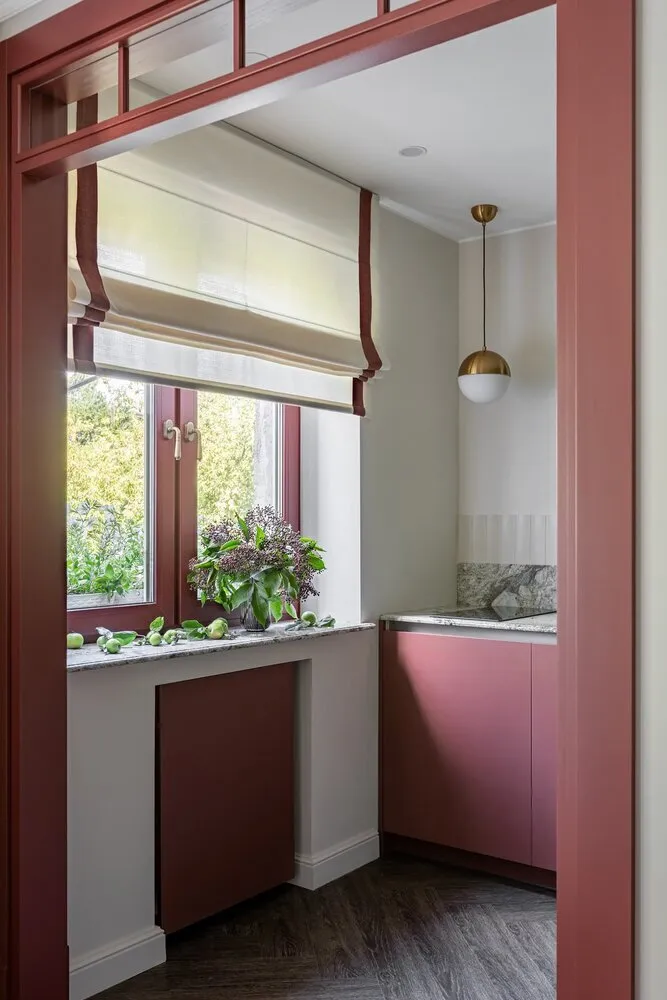
Design: Olga Shtennikova
Space behind and above radiators
Modern heating radiators are much more compact than Soviet cast iron radiators. The freed-up space can be used for narrow shelves and hooks.
Behind the radiator, a shelf 8-10 centimeters deep can be installed. This is enough for spices, cleaning supplies, and small kitchen utensils. Heat from the radiator won't harm most items, and humidity is lower than under the sink.
A drying rack for laundry or a shelf for towels can be placed above the radiator. Constant heat ensures quick drying, which is especially important in a bathroom.
Important note: shelves should not interfere with air circulation. Leave gaps at the top and bottom, otherwise, heating efficiency will decrease.
Built-in wardrobes: uncovering embedded space
In the original Khrushchyovka designs, built-in wardrobes were planned in corridors and bedrooms. Depth of 40-50 centimeters, height from floor to ceiling — a decent storage system.
During renovations, these wardrobes were often embedded, considered inconvenient. But for a Khrushchyovka, any extra storage space is worth its weight in gold. A built-in wardrobe can be restored if it wasn't affected during re-planning.
Modern storage systems allow for a much more effective built-in wardrobe than the Soviet era. Sliding drawers, rotating mechanisms, and lighting — a built-in wardrobe can be more convenient than a freestanding one.
Especially relevant is restoring built-in wardrobes in children's rooms. Kids grow fast, and clothes change with each season — lots of space is needed to store different sizes.
Technical niche between kitchen and bathroom
In panel Khrushchyovkas, there is often a technical niche between the kitchen and bathroom for utilities. Width 20-30 centimeters, depth 40-60 centimeters — a space that is usually empty.
This niche can be adapted for a narrow shelf to store canned goods, cleaning supplies, or toilet paper. The key is ensuring access to pipes and meters if they pass through.
From the kitchen side, it's convenient to store grains, pasta, and canned goods. From the bathroom side — cleaning supplies, towels, and reserves of soap and shampoo.
It's important to consider humidity — the bathroom creates a special microclimate. Use moisture-resistant materials and ensure ventilation in the niche.
Space under the bathtub: hidden storage
Under the bathtub in a Khrushchyovka, there is usually empty space about 50-60 centimeters high. Traditionally, it's covered with a screen and forgotten. However, there you can organize convenient storage.
Sliding drawers under the bathtub can hold cleaning supplies, detergents, and toilet paper. This is especially important for families with children — the use of cleaning supplies is huge.
Modern bathtub screens often come with built-in drawers. If you have an old screen, it can be replaced with a functional alternative.
The main requirement is moisture resistance. Everything stored under the bathtub should be in sealed containers or resistant to humidity.
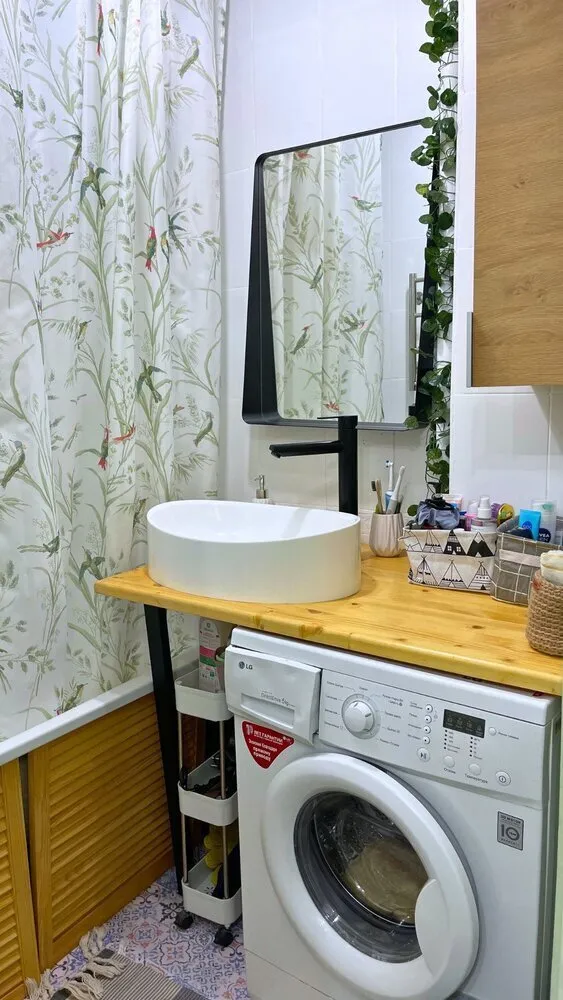
Julia (@yulia_za_design)
Balcony and loggia niches
Even on a tiny balcony of a Khrushchyovka, you can find extra centimeters for storage. The side walls of the balcony often have niches that can be adapted for shelves.
Corner shelves on a balcony utilize dead zones where nothing usually fits. Triangular shelves can hold tools, garden equipment, or sports gear.
If the balcony is glazed and insulated, possibilities expand. You can install wardrobes to the ceiling, set up a workshop or storage room.
An unglazed balcony is only suitable for items that are not afraid of moisture and temperature fluctuations. But there you can store bicycles, skis, or sleds — anything that doesn't fit in the apartment.
How to properly organize found space
- You've found additional meters — that's half the job. It's important to organize them correctly so storage is convenient and safe.
- Use modular storage systems. They allow adapting space to specific needs and changing the configuration when needed.
- Group items by frequency of use. Things used daily should be at hand level. Seasonal items — on top or in distant corners.
- Always label boxes and containers. In a Khrushchyovka, there's no room for long searches among dozens of similar boxes.
- Consider the microclimate characteristics of each zone. Near radiators, plastic and synthetic items shouldn't be stored. In humid areas — paper and cardboard.
What to avoid when organizing storage
- Don't overload structures. Old houses have limitations on load-bearing capacity of floors and walls. Consult specialists when installing heavy storage systems.
- Don't block access to utilities. Meters, taps, and electrical panels must remain accessible for maintenance and emergency shutoff.
- Avoid storing valuable items in unguarded zones. Balcony, basement, shared corridor — not a place for expensive items.
- Don't forget fire safety. Escape routes must remain clear, and flammable substances should not be stored near heat sources.
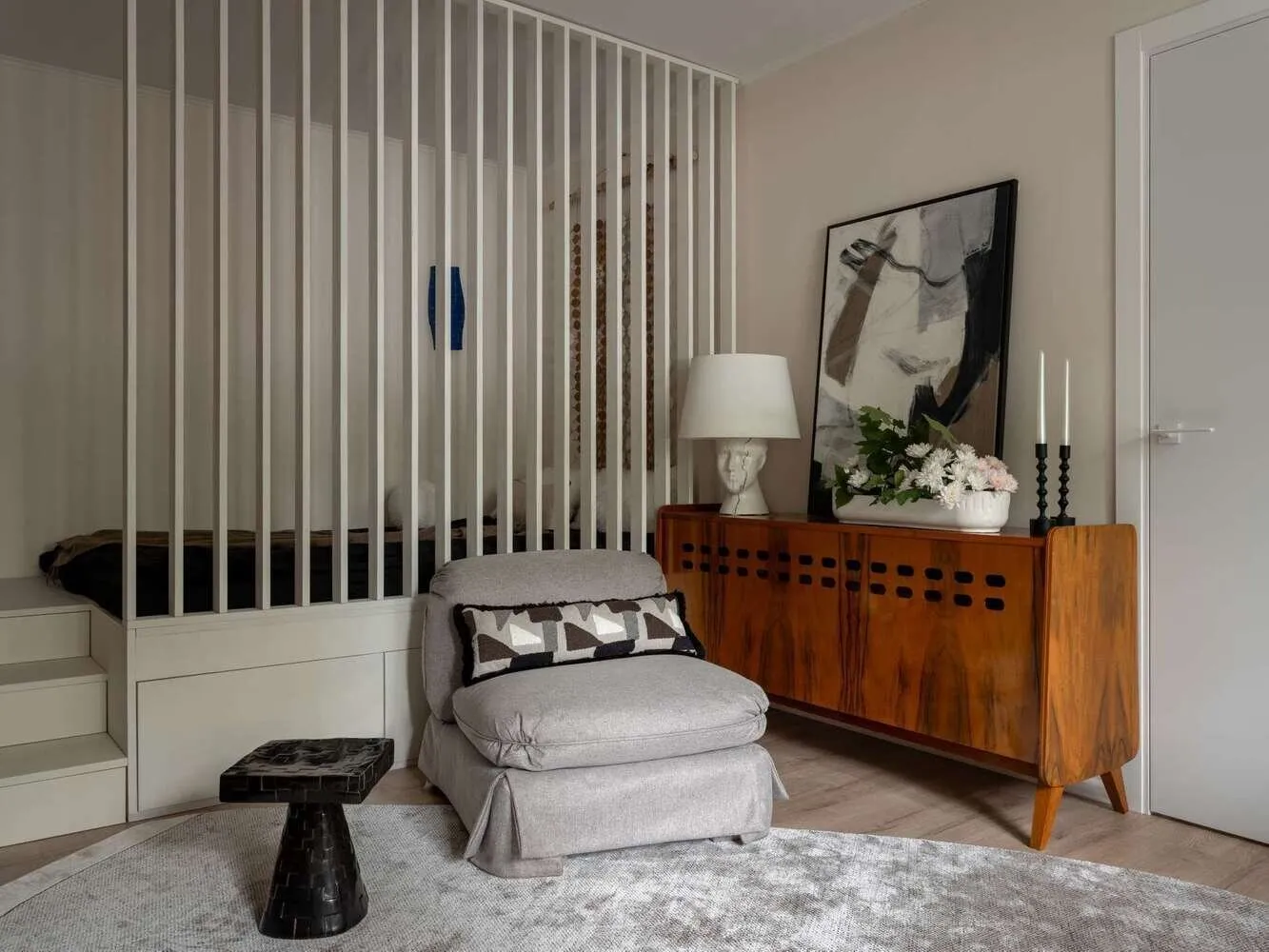
Design: Nastassya Dolenko
Economic efficiency
- Organizing additional storage in a Khrushchyovka pays off quickly. Instead of renting a garage or warehouse for 3,000-5,000 rubles per month, you get free space in your own apartment.
- The cost of organizing one storage system is 5,000-15,000 rubles depending on complexity. This pays off in 2-4 months compared to external rentals.
- Well-organized storage increases apartment value. Buyers are willing to pay extra for thought-out storage systems, especially in small apartments.
Conclusion: every centimeter counts
In a Khrushchyovka, there's no extra space, but there is unused space. The seven described methods give a total of 3-5 additional cubic meters — equivalent to a small storage room.
The key is to approach storage organization systematically. Don't grab everything at once; start with one or two zones, work out the principles, and then expand the system.
Remember: the goal is not to fit as many items as possible, but to make storage convenient and accessible. Well-organized Khrushchyovka can be more comfortable than a spacious apartment with chaotic storage.
Cover: Design project by Maria Tartashnik
More articles:
 How to Fit Everything in 35 sq m: Stylish Design of a Small Studio
How to Fit Everything in 35 sq m: Stylish Design of a Small Studio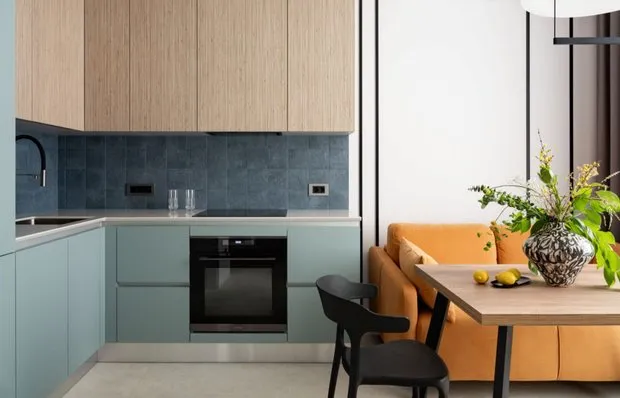 8 Cool Ideas for a Compact Apartment Inspired by a 35m² Studio
8 Cool Ideas for a Compact Apartment Inspired by a 35m² Studio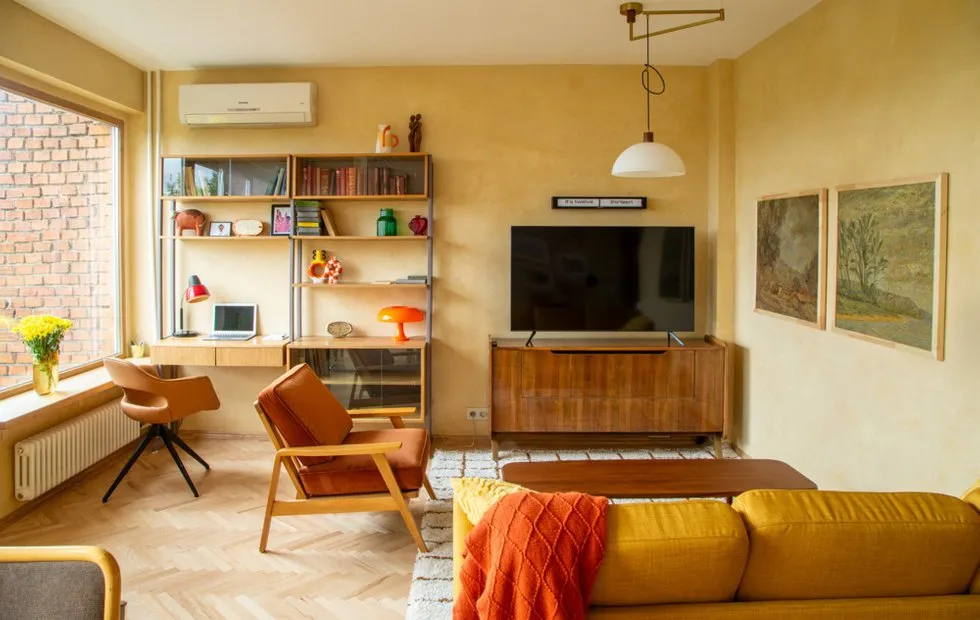 Why Soviet Homes Had Less Dust
Why Soviet Homes Had Less Dust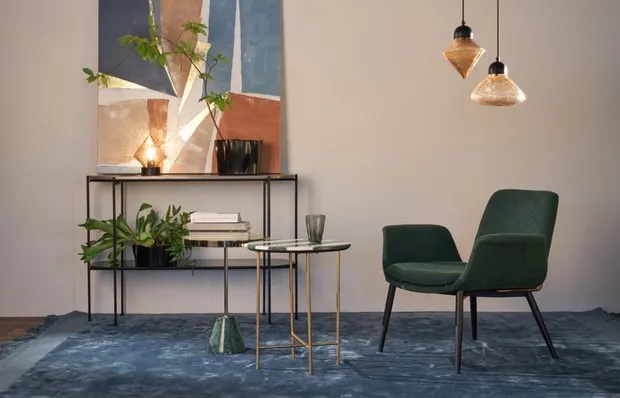 10 Trendy Finds to Refresh Your Interior
10 Trendy Finds to Refresh Your Interior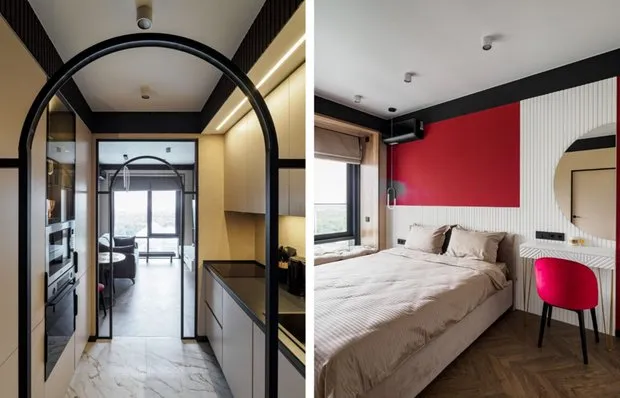 8 Successful Design Solutions We Borrowed from the Most Functional and Aesthetic Two-Room Apartment
8 Successful Design Solutions We Borrowed from the Most Functional and Aesthetic Two-Room Apartment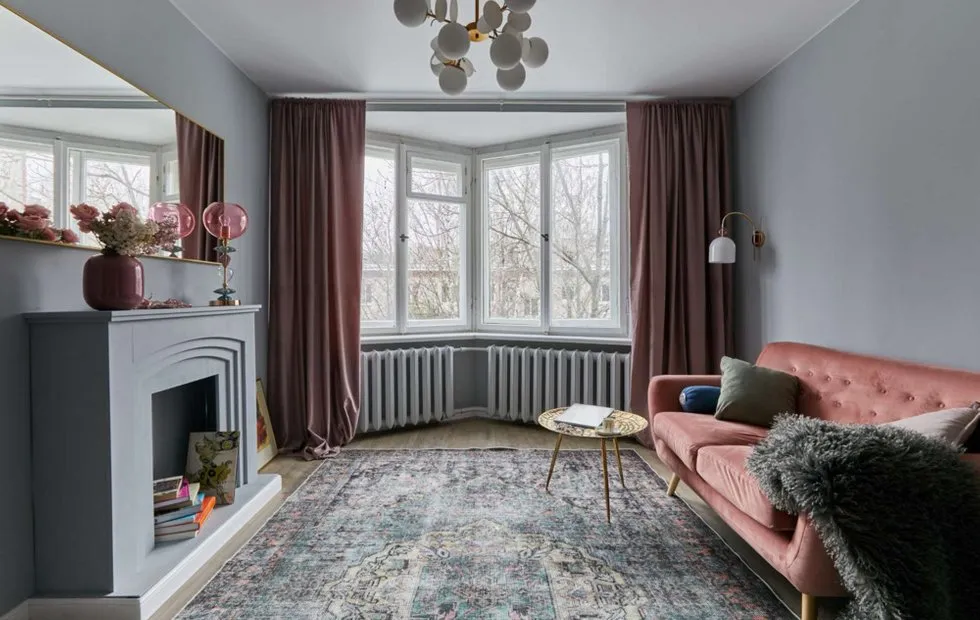 Do You Need to Wash Windows Before Winter or Can You Wait Until Spring
Do You Need to Wash Windows Before Winter or Can You Wait Until Spring Scandinavian Style Is Dead: Which Interiors Went Out of Fashion in 2025
Scandinavian Style Is Dead: Which Interiors Went Out of Fashion in 2025 Jennifer Aniston Back on Air, and 'The Office' Returns: 5 Shows That Will Blow Away September
Jennifer Aniston Back on Air, and 'The Office' Returns: 5 Shows That Will Blow Away September